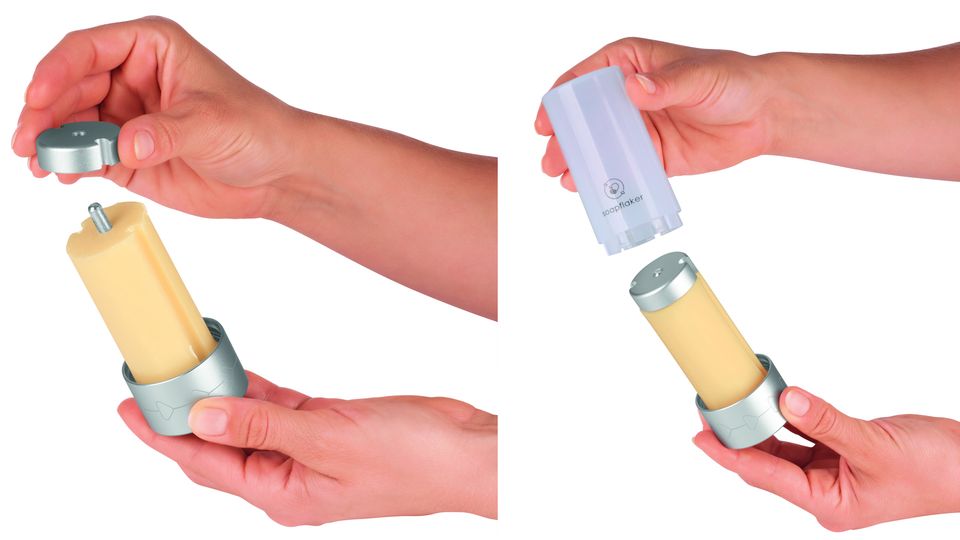Test
Regular hand washing has been more important than ever since the ongoing corona pandemic. That’s what Stefan Hinüber thought too and developed a refillable dry soap dispenser that should be more productive and sustainable than a liquid soap dispenser. Of the stern has tested the so-called “soapflaker”.
Solid soaps with natural ingredients in sustainable packaging have been around for a long time. Nevertheless, (too) many people still prefer to use liquid soap, for example because they find the soap dispenser more hygienic or the dosage easier. However, the fact is that both the manufacturing and the packaging are bad for the environment. “The increased transport volume of liquid soap generates 97 percent more CO2, exhaust gases and delivery traffic than would happen with solid soap,” explains Stefan Hinüber the reason for his invention soapflaker. It is a sustainable dry soap dispenser that should not only be more economical and environmentally friendly, but also prevent skin and water contact. The designer from Essen knows that “nobody is in the mood for a greasy, used bar of soap”. But is that also true? We tested it.
Background: What does the soap dispenser promise?
According to Stefan Hinüber, his refillable dry soap dispenser is particularly economical: a bar of soap should be enough for up to 500 hand washes (with a quarter turn). For comparison: this would take an average of 1500 milliliters of liquid soap. In addition, the soapflaker products do without any disposable plastic – this also applies to the refill sets. But what exactly is in the solid soap that the designer has developed? According to the company, only certified organic vegetable oils from organic and sustainable cultivation are used for the production. The range currently includes two different soaps in the variants “” and ““That is the price At 14.99 euros, there is the soapflaker and a soap for the dry soap dispenser. The refill sets with two soaps cost 7.99 euros.
Practical test: This is how the soapflaker is used
To test the dry soap dispenser, it must be assembled:
- First the acrylic glass should be peeled off and the upper end of the soapflaker unscrewed by hand.
- Then the bar of soap is pushed onto the dispenser and the upper end is screwed back on. It is important that the notches on the soap are directly below those on the aluminum lid.
- Now the acrylic glass is put back on the soapflaker until it clicks into place.
To use the dry soap dispenser, it must be turned like a spice grinder. At the beginning we asked ourselves how the content should end up in the hands. In fact, the soapflaker is so small that it fits in one hand and can easily be turned with the other hand. The fine soap flakes trickle onto the palm of the hand. As a result, the soap itself always remains dry and can – at least as the manufacturer promises – be used up with almost no residue.

Conclusion: did the soapflaker convince us?
Both assembly and use are as easy as the manufacturer promises. Just a small turn of the is enough to wash your hands with. We honestly haven’t found out whether a bar of soap can really be used up to 500 times. Nevertheless, we were pleasantly surprised by the handling and the result. And we also find the sustainable idea behind it, to do without liquid soap and to produce less plastic waste, quite sensible. The design of the dry soap dispenser is modern and handy, so that people who do not want to use solid soap due to its look and feel can also benefit from it. The only pity here is that so far there are only two different types of soapflaker – and there is no way to put another solid soap in the dispenser. All in all, however, we find the prices for the starter set and the refill packs to be fair and appropriate.
Whether the jurors of the founding show “Die Höhle der Löwen” agree, you will find out tonight at 8:15 pm on Vox. Stefan Hinüber is hoping for a deal and is ready to give up ten percent of his company shares. In return, he would like to have 120,000 euros for his company.
This article contains so-called affiliate links. Further information are available here.
Jane Stock is a technology author, who has written for 24 Hours World. She writes about the latest in technology news and trends, and is always on the lookout for new and innovative ways to improve his audience’s experience.




